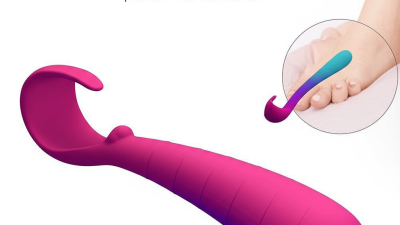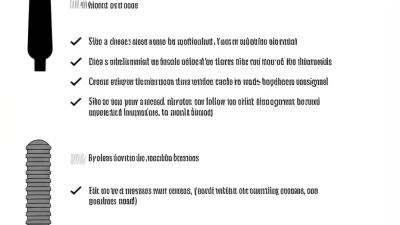Essential Lubricant Maintenance Checklist for Optimal Machinery Performance
In today's fast-paced industrial landscape, ensuring optimal machinery performance is more critical than ever, and one of the key components to achieving this is effective lubricant maintenance. Lubricants play a vital role in minimizing friction, reducing wear and tear, and preventing overheating in various machinery and equipment. However, many organizations overlook the importance of a systematic approach to lubricant maintenance, leading to costly downtimes and inefficient operations.

This blog will delve into an essential lubricant maintenance checklist that can help businesses streamline their processes and enhance equipment longevity. As we explore the future of lubricant management, we will highlight innovative practices, emerging technologies, and tips that can empower maintenance teams to achieve peak performance and reliability in their machinery.
Whether you are responsible for a single machine or an entire fleet, understanding and implementing a robust lubricant maintenance strategy is crucial for staying competitive in the market.
Understanding the Importance of Lubricant Maintenance for Machinery
Lubricant maintenance is a critical aspect of ensuring optimal machinery performance. Machinery operates under significant stress, generating heat and friction that can lead to wear and tear. By regularly maintaining lubricants — from oil to grease — we can significantly extend machinery life and enhance operational efficiency. Regular checks help in identifying the right lubricant type for specific applications, ensuring that each component receives the protection it needs.
Moreover, understanding lubricant degradation is essential. Over time, lubricants can break down due to heat, moisture, and contaminants, losing their protective qualities. Implementing a routine lubricant analysis can alert maintenance teams to the need for changes before more extensive damage occurs. This proactive approach minimizes downtime and repair costs, allowing machines to run smoothly and reliably. By prioritizing lubricant maintenance, we can not only optimize machinery performance but also create a more sustainable operational environment.

Key Lubricant Types and Their Specific Applications in Different Machinery
When it comes to maintaining optimal machinery performance, understanding the key types of lubricants and their specific applications is crucial. Different machinery requires tailored lubrication solutions to ensure efficiency and longevity. For instance, hydraulic systems often utilize anti-wear hydraulic fluids, which can reduce friction and wear significantly.
According to a report by the National Lubricating Grease Institute, using the correct lubricant can extend equipment life by up to 50%, highlighting the importance of selection in this context.
In contrast, industrial gearboxes benefit from gear oils that possess extreme pressure additives to withstand high loads. A study published by the American Society of Mechanical Engineers indicates that improper lubrication in gear systems can lead to a potential 90% increase in wear rates. Therefore, choosing the right gear oil not only improves performance but also minimizes costly downtime.
Tips: Regularly check the compatibility of lubricants with your machinery to avoid chemical reactions that may lead to breakdowns. Additionally, always keep an eye on viscosity, as using oils with incorrect viscosity can impair machinery efficiency. Conducting routine lubricant tests can also help in identifying contaminants and ensuring that your machinery operates smoothly.
Creating a Comprehensive Lubricant Maintenance Schedule for Your Equipment
Creating an effective lubricant maintenance schedule is crucial for ensuring optimal performance and longevity of your machinery. A comprehensive schedule should be tailored to the specific needs of each piece of equipment, taking into consideration factors such as operating conditions, lubricant types, and manufacturer recommendations.
Tip 1: Regularly check the lubricant levels and additives in your machinery. Set a routine inspection schedule—monthly or quarterly—to monitor the condition of the lubricant. This helps to identify any potential issues early on and ensures that your equipment is always running on the right fluids.
Tip 2: Make use of a tracking system to keep records of lubricant changes and inspections. Whether it’s a simple spreadsheet or specialized software, tracking these details can help you analyze patterns over time, ensuring timely maintenance and reducing the risk of costly breakdowns.
Tip 3: Educate your team on the importance of proper lubrication. Conduct training sessions to highlight the role of lubricants in machine performance. A well-informed team can better adhere to the maintenance schedule and recognize when something isn't functioning optimally, ultimately enhancing the reliability of your operations.
Identifying Common Lubricant Issues and How to Troubleshoot Them
Lubricant issues pose significant risks to the performance and lifespan of machinery. According to the International Council on Combustion Engines, improper lubrication can lead to a staggering 30% increase in wear rates and subsequent machinery failures. One of the most common lubricant problems is contamination, which can introduce foreign particles that disrupt the lubricating film. Regularly monitoring lubricant cleanliness through particle counting and visual inspections can help identify contamination levels. Studies show that contamination contributes to over 60% of all lubrication-related machinery failures, making it crucial to take proactive measures.

Another prevalent issue is lubricant degradation, which can occur due to thermal stress, oxidation, or moisture ingress. Research from the Society of Tribologists and Lubrication Engineers indicates that nearly 40% of lubricants fail prematurely due to these factors. To troubleshoot degradation, operators should conduct routine oil analysis, focusing on viscosity, acidity, and the presence of wear metals. By implementing a robust monitoring system and adhering to recommended maintenance schedules, operators can significantly mitigate the risks associated with lubricant-related failures, leading to enhanced operational efficiency and reduced downtime.
Best Practices for Proper Lubricant Application and Storage Techniques
Proper lubricant application and storage techniques are critical components in maintaining optimal machinery performance. According to the Machinery Lubrication magazine, more than 60% of equipment failures can be traced back to inadequate lubrication practices. This underscores the necessity of adhering to best practices when handling lubricants. It is essential to apply the right type and amount of lubricant more carefully, as over-lubrication can lead to excessive heat and contamination, while under-lubrication can accelerate wear and tear. Regular visual inspections and the use of lubricant analysis can enhance the effectiveness of lubrication programs, allowing for timely interventions based on machinery needs.
Storage techniques also play a vital role in ensuring lubricant integrity. The American Petroleum Institute (API) stresses that lubricants should be stored in clean, dry environments away from direct sunlight and fluctuating temperatures. Contamination from dust, moisture, or foreign substances can drastically reduce the effectiveness of lubricants, compromising machinery performance. Additionally, following the FIFO (First In, First Out) method can help maintain the quality of lubricants over time. Proper labeling and tracking of lubricant inventory also aid in ensuring that only the right products are used in equipment, further enhancing reliability and preventing costly downtime. Implementing these practices can significantly optimize machinery performance and extend equipment life.
Essential Lubricant Maintenance Checklist for Optimal Machinery Performance
| Maintenance Task | Frequency | Recommended Practices | Storage Techniques |
|---|---|---|---|
| Check Lubricant Levels | Weekly | Use dipsticks or sight glasses | Store in cool, dry place away from sunlight |
| Inspect for Contamination | Monthly | Check for discoloration and particles | Use sealed containers to prevent contamination |
| Change Lubricant | Quarterly | Follow manufacturer’s specifications | Label containers with type and date |
| Monitor Temperature | Continuous | Use temperature sensors for critical applications | Ensure storage at recommended temperature range |
| Lubricant Dispensing | As Needed | Use clean dispensing equipment to avoid contamination | Keep lids tightly closed when not in use |
Related Posts
-

How to Choose the Perfect Finger Vibrator for Enhanced Pleasure and Satisfaction
-

The Ultimate Guide to Choosing the Perfect Panty Vibrator for Enhanced Pleasure
-

Essential Checklist for Selecting the Right Bullet Vibrator for Your Production Needs
-

7 Best Rabbit Vibrators to Elevate Your Pleasure Experience
-

Innovative Uses for Finger Vibrators to Enhance Your Sensory Experience
-

Exploring Unique Features and Applications of the Best Bdsm Harnesses for Every Preference
